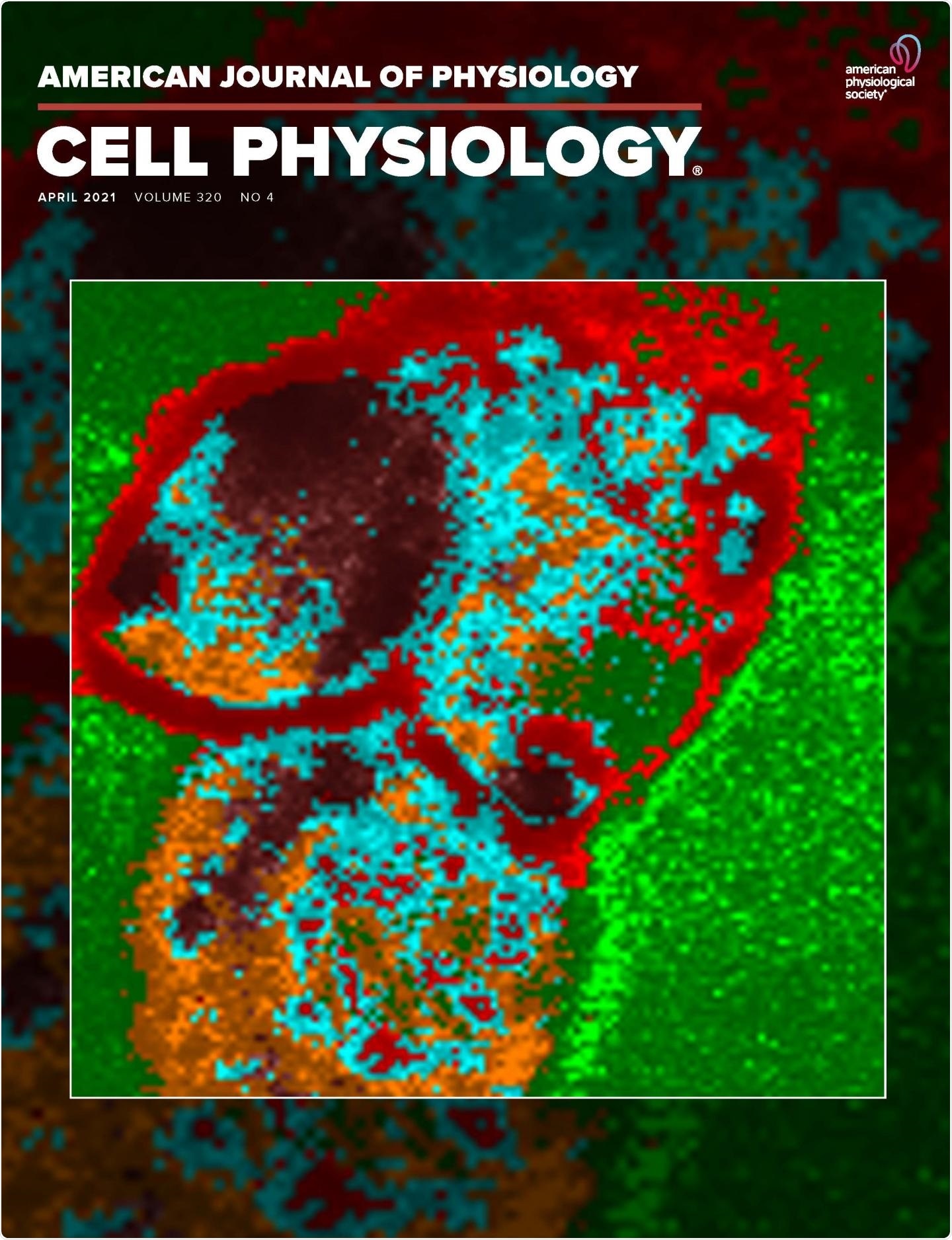When developing a new drug, the first question is, “does it work?” and the second question is, “is it harmful?” Therefore, even if a certain treatment is effective, it is worthless if it affects the patient adversely.

AJP Cell Physiology April issue cover featuring work of UofL biologists. Image Credit: American Journal of Physiology-Cell Physiology.
Now, doctoral student Robert Skolik and Associate Professor Michael Menze, PhD from the Department of Biology at the University of Louisville have discovered a way to make cell cultures react more closely to normal cells, enabling drugs to be tested for toxicity much earlier in the study timeline.
Most of the cells used in biomedical studies are extracted from cancer tissues preserved in biorepositories. Such cells are easy to grow, involve low maintenance, and multiply rapidly. Liver cancer cells, in particular, are preferred for screening drug toxicity for a variety of diseases.
You like to use liver cells because this is the organ that would detoxify whatever drug for whatever treatment you are testing. When new drugs are being developed for diabetes or another disease, one of the concerns is whether they are toxic to the liver.”
Michael Menze, PhD, Associate Professor, Department of Biology, University of Louisville
However, the cells have certain limitations. Cancer cells may not be as responsive to toxins as normal cells, and hence they may not reveal the toxicity problems that can emerge quite later in the drug testing procedure.
Both Skolik and Menze have now found that by modifying two components of the media used to grow the cells, they can make the liver cancer cells act similar to normal liver cells. But instead of using a regular serum that contains glucose, the duo utilized serum from which the glucose had been eliminated through dialysis and added a different type of sugar—galactose—to the media.
Compared to glucose, galactose is metabolized by the tumor cells at a relatively slower rate. This alters the cell metabolism, causing them to behave almost like normal liver cells.
If cells cultured with this modified serum are used, drugs could be efficiently tested for toxicity much earlier in the study phase, potentially saving millions of dollars.
It started just as a way to sensitize cells to mitochondrial activity, the cellular powerhouse, but then we realized we had a way to investigate how we are shifting cancer metabolism. In short, we have found a way to reprogram cancer cells to look—and act—more like a normal cell.”
Robert Skolik, Doctoral Student, Department of Biology, University of Louisville
The study has appeared on the cover of the April issue of the American Journal of Physiology-Cell Physiology. The cover image reflected the research work of Nilay Chakraborty, PhD, and Jason Solocinski from the University of Michigan-Dearborn, who designed a novel process to acquire real-time images of the distribution of energy molecules in cells, demonstrating how cells react to variations in cell culture conditions.
Skolik also cultured the cells for a prolonged period of time than normal to fully realize the effect reported by him.
In the past, people would do a 12-hour adaptation to this new media. But what we showed is if you culture them for 4 to 5 weeks, you have a much more robust shift. When it comes to gene expression, you get much more bang for the buck when you adapt them for a longer period.”
Robert Skolik, Doctoral Student, Department of Biology, University of Louisville
While the altered serum for cultures necessitates an extra phase of dialysis and a longer culture time, it can provide benefits at subsequent testing stages.
“You would reserve this process for key experiments or toxicity screening. However, if you go into a Phase 1 clinical trial and find toxicity there, it is way more expensive than using this method,” concluded Menze.
Source:
Journal reference:
Skolik, R. A., et al. (2021) Global Changes to HepG2 Cell Metabolism in Response to Galactose Treatment. American Journal of Physiology-Cell Physiology. doi.org/10.1152/ajpcell.00460.2020.